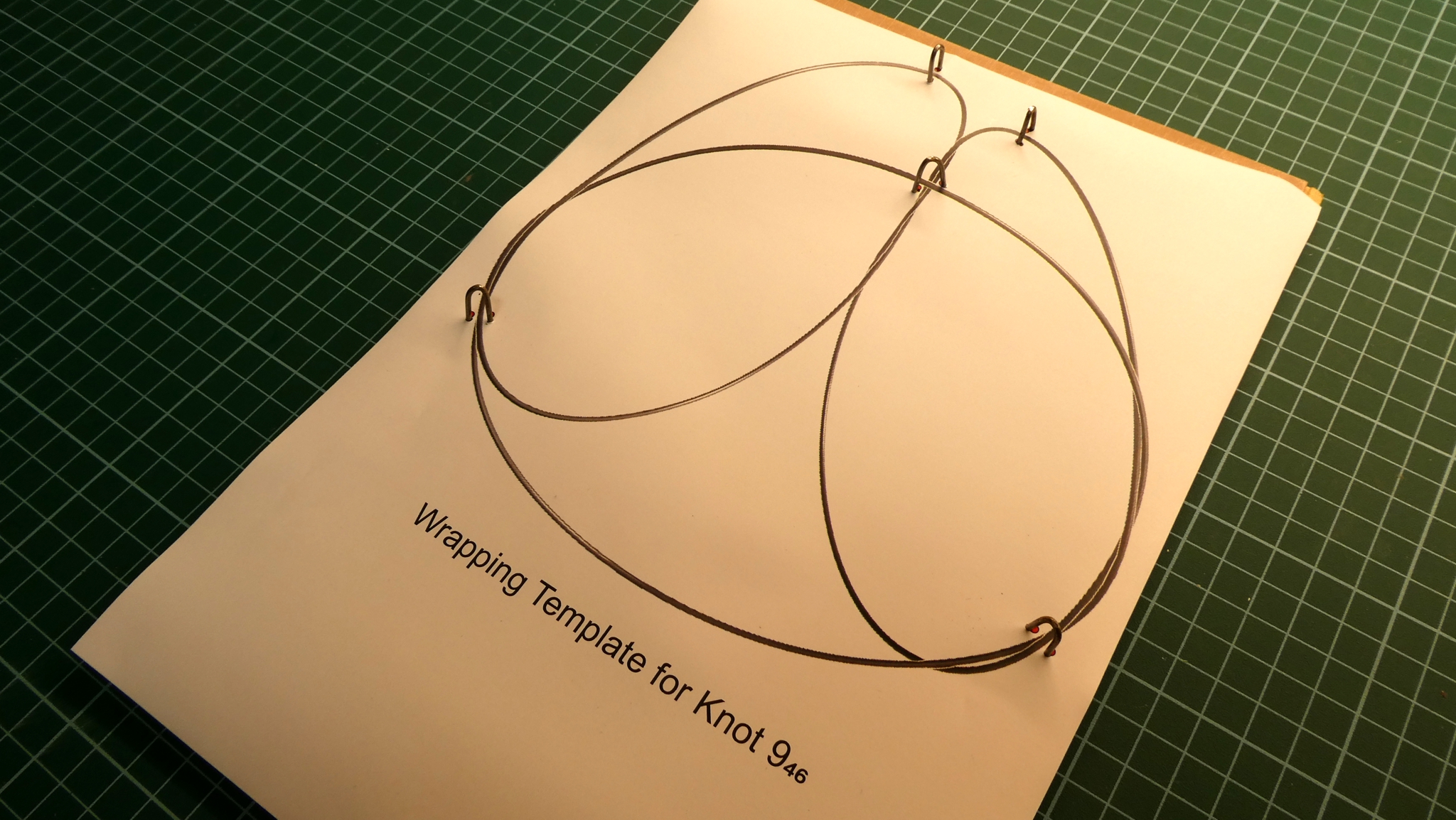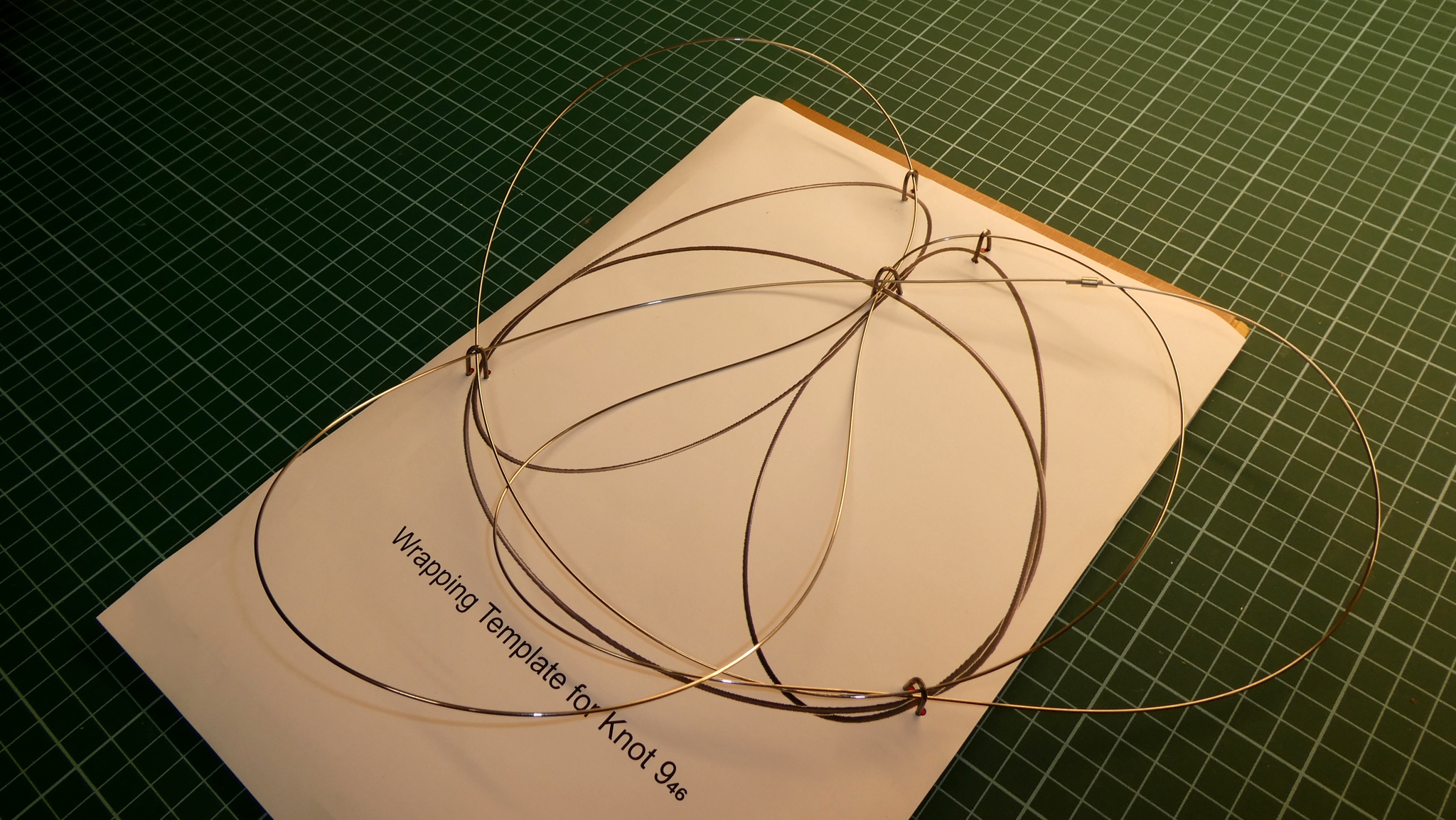The Elastic Knot Puzzle

This puzzle is easy to build, but notoriously difficult to solve, making it ideal for puzzle makers.
Once released, this object springs into a stable, three-dimensional shape. This is why it is called an 'elastic' or 'jumping' knot. To solve the puzzle, you have to bring it back into a flat shape so that it fits into its container.
It was once manufactured by 'Why Knots', a company founded by the mathematician Joel Langer, in 1980-81. However, it is no longer available, so we have to craft it ourselves using this Instructable.
The entire puzzle essentially consists of a single wire that has been braided in a specific way, with the ends connected to form a closed loop. It is also called a 'mathematical knot' because it creates a closed curve:

Our knot has 9 crossings. That's why it is called a 'knot 946'. The number 46 indicates that it's the 46th knot out of a total of 49 possible knots with 9 crossings.
There are several well-known elastic knots, but knot 946 is the strangest of them all. See also this nice video.
Supplies

- Stainless Steel Spring Wire Rope 1mm, 2 meters per puzzle are needed. Another option is to use Nitinol, which is more flexible but also significantly more expensive.
- Aluminum Crimping Ferrules 1,2mm or Wire Rope Crimping Tool Kit for connecting the wire ends
- Fencing Staples, we use it as a braiding aid
Puzzle Assembly

Cut a two-meter piece of stainless steel spring wire.
Correctly knitting the puzzle is not trivial. That's why we use a template. Print the attached PDF file on an A4-(8.5" x 11")-sized sheet of paper. Then, using five fencing staples, nail the sheet to a piece of wood. The positions of the staples are marked in red on the template:

Next, thread the wire through the fencing staples according to the template:

Pay close attention to crossing the wires correctly, and try not to twist them too much. Finally, connect the two wire ends with a crimping ferrule. Then, pull out the fencing staples, and you're done!
Downloads
Puzzle Case

The puzzle must be placed in an appropriate case. You can use either a transparent bag that is approximately 17 cm (6.7") wide or 3D-print the attached STL files.
You can print the entire case in one piece with print support, or print the top and base parts separately without support and glue them together.
Solving the Puzzle

Solving the puzzle is easy once you know the trick. 😁
First, create two adjacent convex triangles by moving the wire. Then, twiggle the puzzle down into four flat circles. Solved! 👏
Bonus: the 9_40 Knot

The 940 knot, also known as the 'Chinese Button Knot', is easier to solve than the 946 knot. Upon release, it springs into a stable, flat shape.
As its name suggests, the 940 knot has nine crossings:

Print the attached PDF file on an A4-(8.5" x 11")-sized sheet of paper. Then, using five fencing staples to nail the sheet to a piece of wood. The positions of the staples are marked in red on the template:

Then, according to the template, thread the wire through the fencing staples:

Connect the two wire ends using a crimping ferrule. Finally, remove the fencing staples and enjoy!